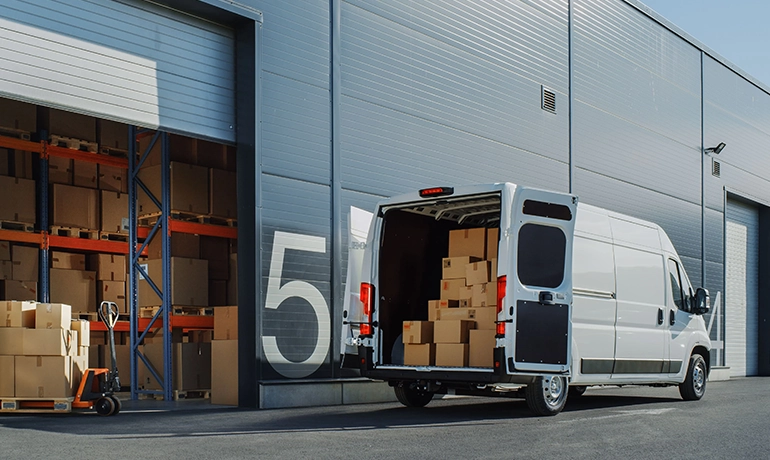Last Mile Delivery Challenges & Growth in Rural India
The quick growth of online services and e-commerce is making India's logistics area change. Even so, last-mile delivery in rural India, the last part of the supply chain from big centers to far-off users, is one of its toughest parts. About 65% of Indians live in rural spots, so bridging this gap is as much a social and economic must as it is a matter of logistics.

The Rural Logistics Challenge
Rural India presents some unique challenges from urban regions:
Poor Infrastructure: Several villages do not have weather-resistant roads, reliable transportation, and tarmac. Landslips, floods, or narrow single-lane roads often lead to delivery delays.
Low population density translates into long distances for few stops on a rural delivery route, thus increasing fuel expenses and decreasing earnings.
Several rural houses do not have official addresses, thus navigation and delivery authentication becomes difficult.
Poor digital connectivity obstructs real -time tracking, customer communication and online payment.
Lack of workers: It is difficult to bring efficient distribution personnel in rural areas and urban agents do not want to travel long distances.
Innovations Revolutionizing Rural Last-Mile Delivery
1. Local Partnerships & Community Models
Companies such as Amazon, Shiprackta, and Rapidship are partnered with local grocery stores, post offices and entrepreneurs to create hyperlocal delivery ecosystems. These agents act as parcel hubs or delivery partners taking advantage of their local knowledge and trust.
2. Drone Delivery Trials
Drone technology is being tested in hilly and flood-prone areas to overcome terrain limitations. While still in experimental stages, these tests hint at a future with air-borne logistics for the inaccessible reaches.
3. Micro-Fulfillment Centers
Logistics companies such as Ekart and XpressBees are setting up regional distribution centers near rural groups, shortening the time of distribution and reducing costs through consolidation.
4. AI-Powered Route Optimization
Platforms such as nuVizz utilize AI to route multi-stop delivery, dynamically reroute in response to weather and traffic conditions, and optimize fuel consumption—right down to low-density areas.
5. Gig Economy & Local Workforce Integration
Incentivizing local youth to work as delivery agents, in addition to resolving access problems, generates employment. Mobile applications and digital onboarding capabilities efficiently train and manage these agents.
6. Real-Time Visibility & Communication
SMS notifications, IVR calls, and live tracking software enhance transparency and minimize failed deliveries. Customers are notified, maximizing trust and decreasing support overhead.
Case Study: Connect India – A Rural Entrepreneurial Ecosystem
Connect India is an exemplar of rural logistics innovation. Started with the mission to connect rural consumers and producers to international markets, it created a partner-led, asset-light model leveraging:
- Connect India Centers (CICs)
- Rapid Fulfillment Centers (RFCs)
- Micro-warehouses
- Local delivery partners
This model facilitated last-mile delivery of e-commerce, banking, and government services. It also facilitated reverse logistics, enabling rural artisans and farmers to dispatch goods to urban consumers. By 2024, Connect India expected to create 500,000 jobs and be a billion-dollar company.
Government Support & Strategic Reforms
The government of India has acknowledged the significance of rural logistics and launched a number of initiatives:
- PM Gram Sadak Yojana Phase IV: Concentrates on rural road upgradation to enhance last-mile connectivity.
- National Logistics Policy (NLP): Seeks to lower logistics costs and enhance multimodal integration.
- PM Gati Shakti Master Plan: Increases infrastructure planning across ministries to ensure seamless connectivity.
- Digital Public Infrastructure (DPI): Supports data sharing, cargo tracking, and route optimization.
These reforms will lower logistics costs to under 10% of GDP by 2030, making rural delivery more scalable and viable.
Road Ahead
To bridge the rural logistics divide effectively, India has to:
- Invest in rural infrastructure—roads, warehousing, and connectivity.
- Drive tech adoption—AI, IoT, and mobile platforms for delivery management.
- Enable local communities through training, employment, and entrepreneurship.
- Support public-private partnerships for scaling successful models such as Connect India.
- Enable green logistics through EVs and eco-friendly delivery practices.
Expert Rural Delivery & Supply Chain Solutions in India
Last-mile delivery in rural India is not just a logistical issue—it's an entry point to inclusive development, digital empowerment, and economic change. With technology, policy, and innovation coming together, the ultimate logistics frontier is being rewritten. Those businesses embracing this transition will not only open up new markets but also help establish a more integrated and balanced India, with Sarvam Logistics taking the lead in filling this vital bridge. With its emphasis on connectivity to rural areas, Sarvam Logistics facilitates vital goods and services to extend even to isolated communities. Through innovation and access, the firm is forging the future of inclusive logistics in India.
References:
- Logistics Issues in Rural India – nuVizz Reports
- Rural Delivery Models – Connect India Case Study
- Connect India Entrepreneurial Ecosystem – Business Today
- Government Initiatives – Ministry of Road Transport and Highways, National Logistics Policy Documents